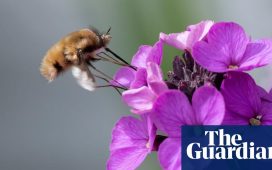Last week the leader of the New South Wales Nationals, John Barilaro, brought the state’s Coalition government to the brink of collapse over koala protections. Within days, the Liberal premier, Gladys Berejiklian, had stared him down and Barilaro retreated from his threats.
In comparison with the Nationals, who want to repeal new legislation aimed at protecting koala habitat, the Liberals now seem like the animals’ saviours.
But environmentalists say the Berejiklian government’s commitment to protecting the endangered species is patchy and that even with the new rules there are serious risks to the koala’s survival.
For groups such as the Nature Conservation Council, the koala protections in the new Koala habitat protection state environmental planning policy (Sepp) at the centre of last week’s drama don’t go nearly far enough.
They warn that much more aggressive steps are needed, including the creation of a Great Koala national park to be formed out of conversion of key state forests, if the koala is to avoid extinction in NSW by 2050. To create the park the NSW government would need to cease logging in several state forests on the north coast.
The new Sepp changes the definition of what is core koala habitat, meaning more land can potentially be captured under the policy. Farmers, developers or land owners whose land is captured by the definition and who want to undertake a significant development will need to get a koala assessment done.
The new Sepp does not apply to routine farming practices. Councils with koala populations can choose to develop a strategy to manage koalas in their area. But the Sepp does not actually stop koala habitat from being bulldozed if the development is approved by council.
These are some of the current threats to koala habitat.
The Brandy Hill quarry extension in Port Stephens
The NSW independent planning commission has approved an extension to a rock quarry in the town of Port Stephens that would destroy 52 hectares of koala habitat.
The project is on a list of developments the NSW government wants fast-tracked as part of its economic response to the Covid-19 pandemic.
It would more than double the output of the Brandy Hill rock quarry from 700,000 tonnes a year to 1.5m tonnes to supply the Sydney construction market.
Local residents have been running a campaign asking the federal environment minister, Sussan Ley, to step in and use her powers under national laws to knock the development back. The community argues the risk to the species is too great, particularly in the aftermath of the bushfires.
It comes as the federal government is looking to transfer its decision-making powers under federal environmental laws to state and territory governments. Ley has delayed her decision on the quarry expansion to mid-October.

The Shenhua Watermark coalmine
Koalas on the site of the proposed coalmine are heading towards localised extinction even before the mine commences, according to meeting minutes for the company.
Experts who sit on the mine’s technical working group have warned there has been a steep drop in koala populations at the mine site in the Liverpool Plains and have raised concerns that the clearing of habitat for the project will accelerate this decline further.
Koalas at the site have been under pressure due to drought and chlamydia. As part of its approval conditions for the mine, Shenhua must produce a koala management plan that will be assessed by the NSW government.
Earlier this year, the Environmental Defenders Office called for this approvals process for the management plan to be suspended because the full impact of the project could not be fully understood until the effects of the bushfire crisis on NSW koala populations was known.

Logging of koala habitat
In the months after the bushfire crisis, NSW Forestry Corporation resumed logging of unburnt forest that is habitat for several of the state’s most imperilled species.
This has included logging of unburnt koala habitat in a number of forests, including the Lower Bucca, Nambucca and Comboyne state forests, despite dismay from state MPs and local communities.
The Lower Bucca has high-value koala habitat that may be important for species recovery after the fires and is part of the bushland identified for the proposed Great Koala national park.
The logging is being carried out under the Coastal Integrated Forestry Operations Approval, an agreement that sets out the rules under which forestry can conduct its logging activities.
NSW Forestry Corporation has argued the logging of unburnt habitat is necessary for regional jobs and businesses rebuilding after the fires.
Barilaro is the minister for forestry. The ministerial diaries, published as part of the state’s disclosure regime, show he met with a dozen or more timber companies after the bushfires to discuss a recovery plan for the industry.

Blueberry farming around Coffs Harbour
Blueberry farming has expanded dramatically in the last two decades around the Coffs Harbour region. Many of the farms are close to housing developments and surrounded by bushland that have been mapped as koala habitat. The new Sepp would apply if there was expansion of farming areas that required land clearing or farmers wanted to redevelop their holdings into housing developments.
Nationals MP for Coffs Harbour Gurmesh Singh, a former blueberry farmer, was chair of the Oz Group Co-Op, a major agricultural cooperative, prior to entering parliament. He has a one-sixth interest in a property in the Pillar Valley that has had areas affected by the new koala Sepp. His family trust also owns a large blueberry farm at Upper Corindi. He was one of the first MPs during last week’s drama to threaten to sit on the crossbenches.
Urban expansion of cities and towns
The loss of Cumberland Plain woodland around Sydney, which is now an endangered ecological community, has had an enormous impact on local koala populations. The pressure is continuing, particularly on the south-west fringe of Sydney.
In 2018 the state government approved a major subdivision by Walker Corp at Wilton, on the condition that protection measures were put in place to keep koala corridors and erect fences to stop them straying onto roads. The developer has worked with Wollondilly council to come up with a strategy.

Lend Lease has recently been given approval for the Mount Gilead development which also raised concerns about koala habitat. The state government put a heritage listing on an historic homestead in the area to protect 150 hectares of core koala habitat threatened by the development.
But there are other urban pressures, particularly on the mid and north coast of NSW. Some farmers object to the koala Sepp because of the potential damage it could do to the value of their rural properties, should the opportunity arise to subdivide them.
Some say the maps are too imprecise and will affect their values when there is no evidence of koala populations. They accuse the government of taking a broad brush and drawing the maps using satellite imagery to identify 65 tree species that might hold koala populations.
Particular hotspots with koala populations are Hawks Nest, Myall Lakes, Bellingen, Coffs Harbour and the Clarence Valley.
The MP for Clarence, Chris Gulaptis, has been one of the most vocal critics of the Sepp.
Land clearing in north-west NSW
The continued clearing of land for broad acre farming in the north-west of the state is also leading to habitat loss. Land clearing is covered by land management laws and clearing can continue if it is permitted under the land-clearing codes. The adequacy of the land-clearing laws is another battle that is currently being waged by environmental groups.













